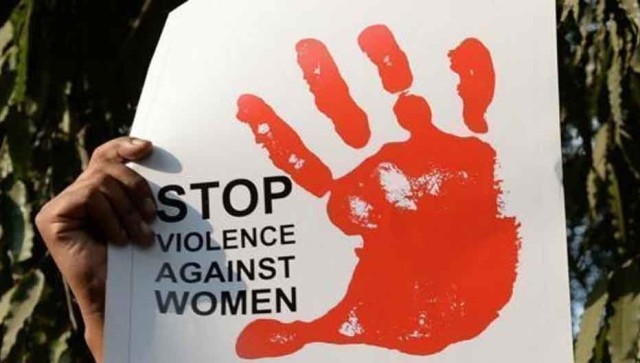Recently, the Bombay High Court, while acquitting a man of rape charges, observed that there is a need for corroborating the testimony of a woman in sexual assault cases where the woman in question is habituated to sexual intercourse. The court even went a step further and stated that in such cases, there is likelihood (on the part of the woman) to level accusations of rape owing to an “instinct of self-preservation”. In effect, the Bombay High Court judgment recognised that a rape victim’s past sexual behaviour would be relevant in adjudicating sexual assault cases, and that past sexual conduct (if established) would require the victim to corroborate her testimony in a sexual assault case. This observation by the court is troubling for the reason that it fails to provide a ‘rape shield’ to victims of sexual assault and in doing so, it risks exposing the victim to further shaming and blaming.
Meaning and origin of rape shield laws
Rape shield laws evolved in the 1970s to address the infirmities in the prosecution of rape. A rape shield law refers to legislation which restricts the defence from examining or cross-examining a sexual assault victim on her past sexual conduct and includes a prohibition against publicly disclosing the identity of sexual assault victims. The term ‘shield’ in the phrase, ‘rape shield’, is a metaphor for the protection which is offered to rape victims in sexual assault cases. A need for rape shield laws was felt because historically, defence attorneys would introduce evidence of a rape victim’s past sexual relationships in rape trials to paint the rape victim as promiscuous, and argue that testimony of such women was not credible. Introducing such evidence in rape trial not only made convictions in rape cases difficult but also deterred rape victims from reporting sexual assault incidents, for fear of being “put on trial”. The sex revolution of the 60s which pushed for greater acceptance of premarital sex and birth control and the emergence of feminist legal theories contributed to the origin of rape shield laws in the United States. Rape shield laws also exist in other countries such as Canada and Australia. The protection offered by rape shield laws differs in various jurisdictions and is excluded by certain countries in cases where the rape victim had a previous relationship with the accused. The reason behind this is to enable the defence to establish ‘consent’ in cases of a shared history between the sexual assault victim and the accused.
Rape shield laws in India
In the aftermath of the Jyoti Singh gang rape case in 2012, the Centre enacted the Criminal Law (Amendment) Act, 2013 to make sexual assault laws in India more robust. The 2013 law inserted section 53A in the Indian Evidence Act which treats evidence of the victim’s character and past sexual behaviour as irrelevant in establishing consent in certain criminal offences including rape. The 2013 law also amended section 146 of the Evidence Act to prohibit evidence or questions in cross-examination aimed at discussing a victim’s previous sexual experience in rape cases. It is worth noting that the Indian Evidence Act provides an ‘absolute’ rape shield without specifying any circumstances when the rape shield would not be applicable. Section 228A of the Indian Penal Code also makes it an offence to disclose the identity of a rape victim. Despite the existence of laws which expressly provide rape shield in India, there have been instances where Indian courts have published the names and details of rape victims in reported judgments. In the present case too, the Bombay High Court failed to recognise that Indian law disallows previous sexual experience of a rape victim from being introduced as evidence in rape cases.
The harm which is inflicted on a rape victim due to non-implementation of rape shields is manyfold. Firstly, the possibility of the defence verbally assailing a rape victim based on her sexual history might deter rape victims from reporting incidents of sexual assault. This, in turn, would cause more cases of sexual assault in India to go unreported and contribute to the abysmal statistics on sexual assault in our country. Secondly, the defence has been known to employ the strategy of introducing a victim’s past sexual conduct to undermine the credibility of the testimony of rape victims, making it extremely difficult for the prosecution to successfully establish a case “beyond reasonable doubt”. Thirdly, the non-application of a rape shield law violates a woman’s right to privacy by allowing her personal life to be put on public display during a rape trial.
Two-finger test
A related concept is the two-finger test (also known as ‘virginity-test’) which is used in rape trials to determine whether the victim is accustomed to sexual conduct. Before the practice was outlawed in several jurisdictions, the two-finger test entailed medically examining a rape victim by inserting two fingers into the victim’s vagina to determine vaginal laxity; the test was premised on the belief that if the vagina was “lax” enough, it indicated that the woman was sexually active and hence, there was a possibility that she had ‘consented’ to the sexual assault act in question. Activists argue that the test is flawed because vaginal laxity could also be attributed to exercise or physical activity. The two-finger test was conducted in India to determine consent in rape cases before the Supreme Court in 2013 held that the test violated a woman’s right to privacy.
The inherent problem with virginity testing and the failure to prevent a rape victim’s previous sexual history from being introduced as evidence is the presumption that a sexually active woman is dishonest. This bias is also prevalent in Justice Badar’s observation that a woman who is habituated to sexual intercourse would falsely accuse a man of rape on account of “self-preservation”. Concerns that a woman could level rape charges against a former boyfriend/partner out of bitterness are justified. However, even in cases where the accused is known to the victim, the rape shield should be eclipsed only to the extent of permitting evidence of the victim’s past sexual involvement with the accused in question.
While it is easy to conclude that a woman accused a former partner of rape out of vengeance (making it necessary for the defence to establish consent through previous sexual relationship between the victim and the accused), there is also the possibility that it was the accused who was seeking revenge on the victim (with whom he was in a previous relationship) by sexually assaulting her. Revenge porn, which refers to uploading of sexually explicit videos/photographs of a person (typically by a former partner) without their consent, is an example of how men in sexual relationships seek revenge on their former partners. Therefore, courts in India must not be guided by bias in case of a sexually active victim. Further, Indian judges must recognise that the law expressly provides rape shield, and ensure that victims are accordingly protected in rape trials.
(The phrase ‘rape’ and ‘sexual assault’ have been used interchangeably in this article.)
The author is a research fellow at Centre for WTO Studies, Indian Institute of Foreign Trade. She is also a Volunteer at Strategic Advocacy for Human Rights. Views expressed are personal.


)




)
)
)
)
)
)
)
)